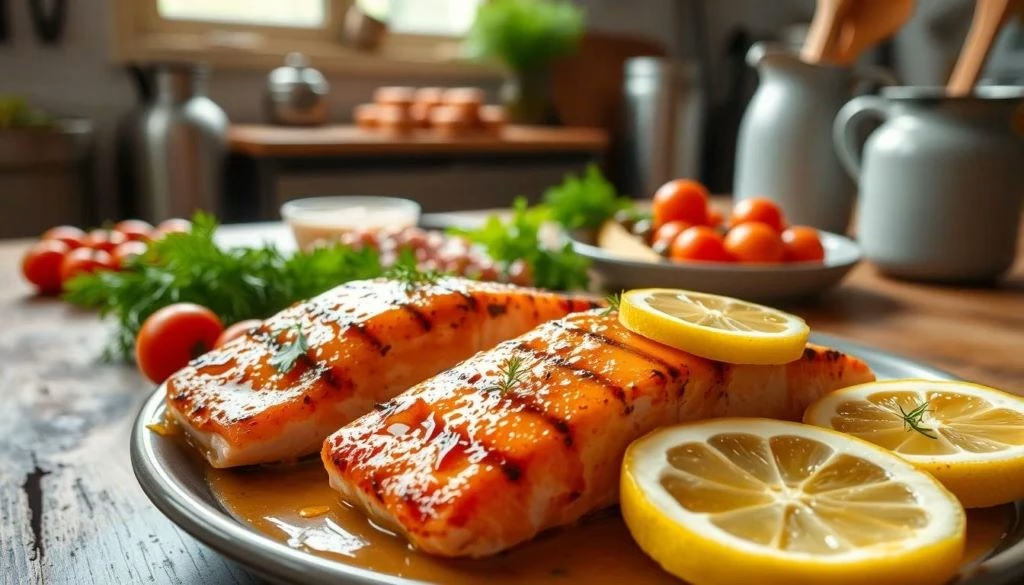I begin by rinsing the salmon under cold water, patting it very dry with paper towels. I use tweezers to remove any pin bones, and if I’m keeping the skin on, I’ll lightly score it. Doing this helps the glaze adhere and the salmon cook more evenly without curling or steaming.
Next, I combine honey, soy sauce, minced garlic, and lemon juice in a bowl to make a glaze. Then I coat the salmon fillets thoroughly and refrigerate them. I’ll marinate anywhere from 30 minutes up to 2 hours to let the flavors penetrate. Turning the fillets halfway through helps ensure both sides absorb flavor.
I place the salmon fillets skin-side down on a parchment-lined baking sheet, brush with half of the glaze. Then I bake for about 12-15 minutes until the internal temperature reaches ~145°F (63°C). To get that caramelized topping, I finish under the broiler for 2-3 minutes. I keep a close eye so the sugars in the glaze don’t burn. Resting for 5 minutes off the heat lets the juices settle before serving.
